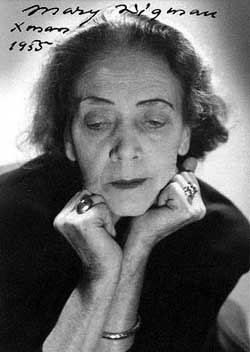Laban Von Rudolf was a theorist and teacher that had a great
impact on the development of modern dance starting in central Europe. He contributed a movement analysis known as
choreutics. This method involved 12 primary directions of movement all of which
derived from complex geometric figures. He also answered a question of movement
quality in his theorectical system of eiukinetics. This design was made to
increase the range of control and expressional movement a dancer may possess.
Laban was also the first to begin writing dance in a notation known as Labanotation.


Icosahedron: https://www.youtube.com/watch?v=819szgQ7ycA
https://www.youtube.com/watch?v=sh364qz66yw
Mary
Wigman was one of Laban Von Rudolf’s students who were greatly influenced by
his approach to space. She began choreographing dance with a relationship
between individual and space which was closely related to Laban’s choreutics.
In her early years of creating she developed a unique expressionist style of
dance she called “absolute dance,” which has the definition of independent of
any literary devices. As a scholar and teacher she was received in Germany and
became known as “Ausduckstanz,” or Expressionist Dance. After years of
experimenting with music she took a new approach and started to have her music
composed to enhance her individual dances. Her influence was spread amongst all
who saw her dance and her students which can be traced all around central
Europe and the United States.

